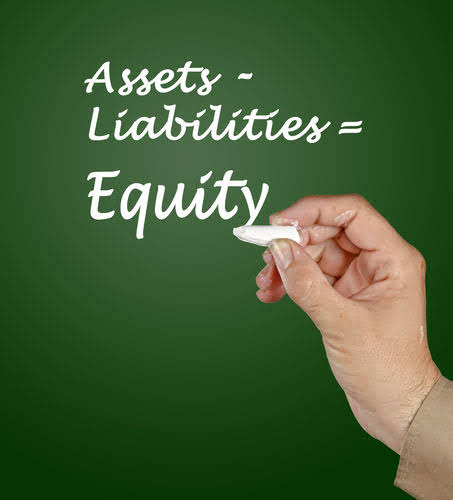
Salvage value is the amount a company can expect to receive for an asset at the end of the asset’s useful life. A company uses salvage value to estimate and calculate depreciate as salvage value is deducted from the asset’s original cost. A company can also use salvage value to anticipate cashflow and expected future proceeds. In some contexts, residual value refers to the estimated value of the asset at the end of the lease or loan term, which is used to determine the final payment or buyout price. In other contexts, residual value is the value of the asset at the end of its life less costs to dispose of the asset.
Use of Salvage Value to determine Depreciation
The type of asset, its depreciation pattern, and external factors such as changes in regulations or industry trends can also impact the estimation. It is the anticipated value of the asset, considering elements such as depreciation, age-related deterioration, and becoming outdated. Salvage value is the projected worth of an asset when it has completed its useful cycle or is no longer being utilized.

Find similar assets in the marketplace

Through that process, you’re forced to determine the asset’s useful life, salvage value, and depreciation method. Yes, salvage value can be considered the selling price that a company can expect to receive for an asset the end of its life. Therefore, the salvage value is simply the financial proceeds a company may expect to receive for an asset when its disposed of, though it may not factor in selling or disposal costs. Salvage value is the estimated book value of an asset after depreciation is complete, based on what a company expects to receive in exchange for the asset at the end of its useful life. As such, an asset’s estimated salvage value is an important component in the calculation of a depreciation schedule. The four depreciation methods include straight-line, declining balance, sum-of-the-years’ digits, and units of production.

Salvage Value Formula
- Say you own a chocolate business that bought an industrial refrigerator to store all of your sweet treats.
- That company may have the best sense of data based on their prior use of trucks.
- With a large number of manufacturing businesses relying on their machinery for sustained productivity, it is imperative to keep assessing the equipment they own.
- In these situations, the declining balance method tends to be more accurate than the straight-line method at reflecting book value each year.
- Companies take into consideration the matching principle when making assumptions for asset depreciation and salvage value.
For example, a company may decide it wants to just scrap a company fleet vehicle for $1,000. This $1,000 may also be considered the salvage value, though scrap value is slightly more descriptive of how the company may dispose of the asset. Companies can also use comparable data with existing assets they owned, especially if these assets are normally used during the course of business. For example, consider a delivery company that frequently turns over its delivery trucks. That company may have the best sense of data based on their prior use of trucks.
Risk Management
In accounting, an asset’s salvage value is the estimated amount that a company will receive at the end of a plant asset’s useful life. It is the amount of an asset’s cost that will not be part of the depreciation expense during the years that the asset is used in the business. Accountants use several methods to depreciate assets, including the straight-line basis, declining balance method, and salvage value equation units of production method. Each method uses a different calculation to assign a dollar value to an asset’s depreciation during an accounting year. The double-declining balance (DDB) method uses a depreciation rate that is twice the rate of straight-line depreciation. Therefore, the DDB method would record depreciation expenses at (20% x 2) or 40% of the remaining depreciable amount per year.
- The salvage calculator reduces the loss and assists in making a decision before all the useful life of the assist has been passed.
- Let’s say the company assumes each vehicle will have a salvage value of $5,000.
- A company can also use salvage value to anticipate cashflow and expected future proceeds.
- Overall, the companies have to calculate the efficiency of the machine to maintain relevance in the market.
- Some financial institutions may even have their own sophisticated methods and valuation models that already are in place, which does not require them to follow the two common methods mentioned above.
- Many business owners don’t put too much thought into an asset’s salvage value.
You get it by adding up the value it has lost yearly for as long as you have owned it. The most important factors to consider are the circumstances and the goal of the valuation. Decide which method fits best by looking at the picture and determining what resources are available and ready to use. Read on to understand how salvage value works, its importance, calculation, example and uses. J.B. Maverick is an active trader, commodity futures broker, and stock market analyst 17+ years of experience, in addition to 10+ years of experience as a finance writer and book editor.

To start, a company must know an asset’s cost, useful life, and salvage value. Then, it can calculate depreciation using a method suited to its accounting needs, asset type, asset lifespan, or the number of units produced. Companies have several options for depreciating the value of assets over time, in accordance with GAAP. Thus, the methods used in calculating depreciation are typically industry-specific. Not all assets are purchased conveniently at the beginning of the accounting year, which can make the calculation of depreciation more complicated. Depending on different accounting rules, depreciation on assets that begins in the middle of a fiscal year can be treated differently.
It allows for a more fluid and market-oriented approach to sizing up an asset’s potential worth in the open market. Subtract the accumulated depreciation from the initial cost to determine the residual value. Residual value is an essential factor in calculating the depreciation of an asset. It helps institutions determine the gradual decrease in value over time and appropriately allocate the asset’s cost. By incorporating this concept into their asset management strategies, businesses can navigate the complexities of the market with greater clarity and confidence.
By accurately determining the value, businesses can optimize their financial strategies, anticipate future costs, and allocate resources effectively. It’s the expected residual value of the asset after accounting for aspects like depreciation, age-related wear and tear, and obsolescence. Each year, the depreciation expense is $10,000 and four years have passed, so the accumulated depreciation to date is $40,000.
